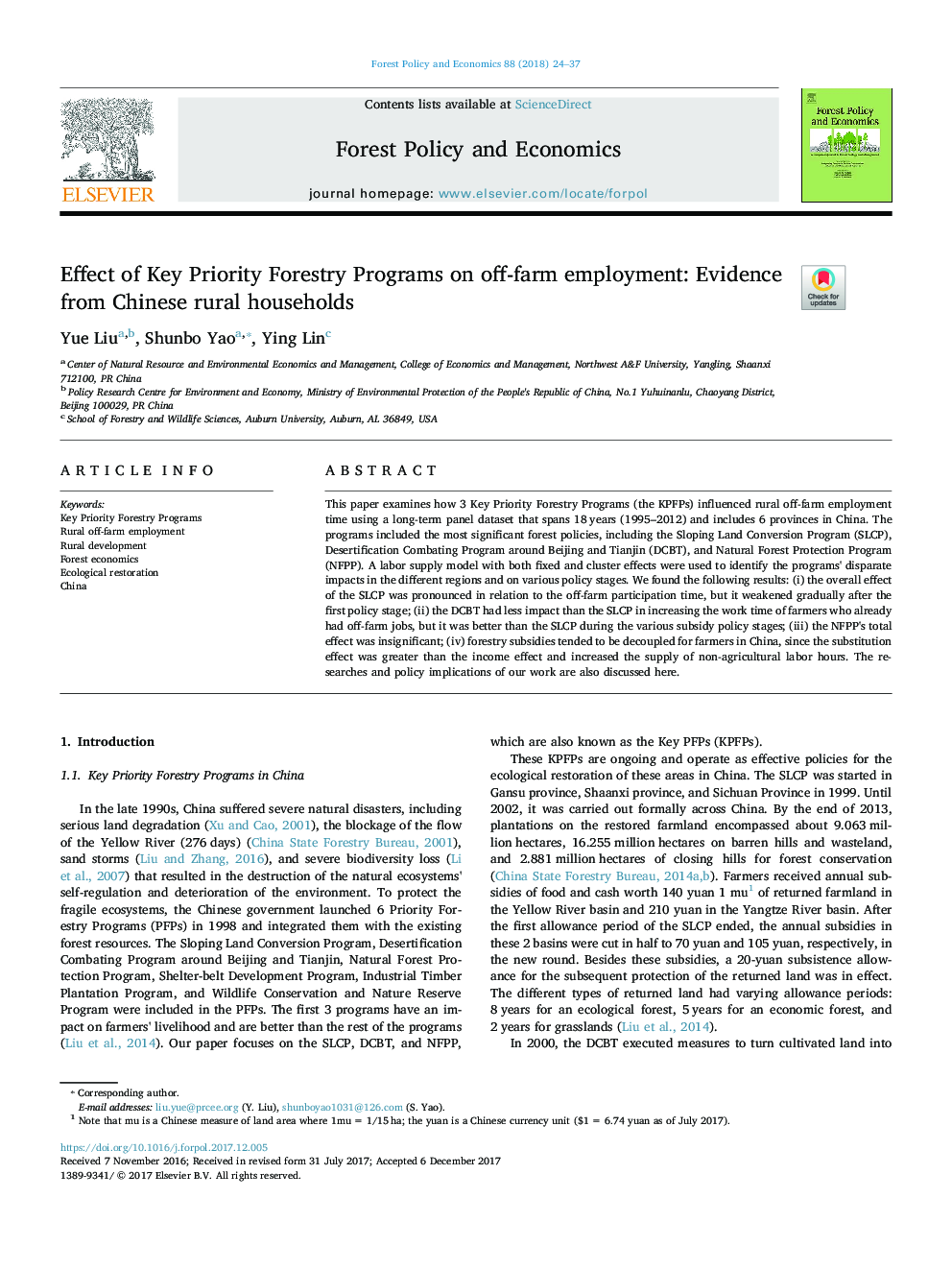| Article ID | Journal | Published Year | Pages | File Type |
|---|---|---|---|---|
| 6544804 | Forest Policy and Economics | 2018 | 14 Pages |
Abstract
This paper examines how 3 Key Priority Forestry Programs (the KPFPs) influenced rural off-farm employment time using a long-term panel dataset that spans 18Â years (1995-2012) and includes 6 provinces in China. The programs included the most significant forest policies, including the Sloping Land Conversion Program (SLCP), Desertification Combating Program around Beijing and Tianjin (DCBT), and Natural Forest Protection Program (NFPP). A labor supply model with both fixed and cluster effects were used to identify the programs' disparate impacts in the different regions and on various policy stages. We found the following results: (i) the overall effect of the SLCP was pronounced in relation to the off-farm participation time, but it weakened gradually after the first policy stage; (ii) the DCBT had less impact than the SLCP in increasing the work time of farmers who already had off-farm jobs, but it was better than the SLCP during the various subsidy policy stages; (iii) the NFPP's total effect was insignificant; (iv) forestry subsidies tended to be decoupled for farmers in China, since the substitution effect was greater than the income effect and increased the supply of non-agricultural labor hours. The researches and policy implications of our work are also discussed here.
Related Topics
Life Sciences
Agricultural and Biological Sciences
Forestry
Authors
Yue Liu, Shunbo Yao, Ying Lin,
